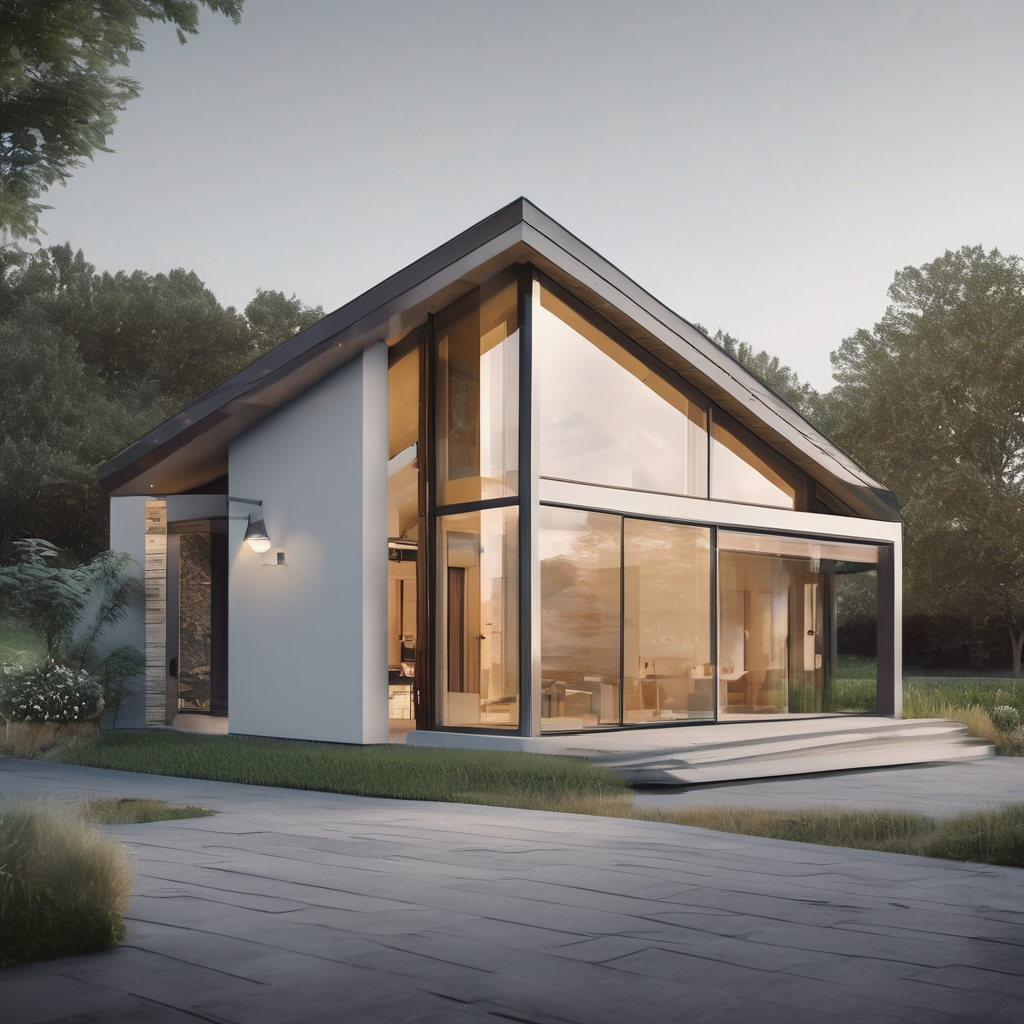Core principles of UK home décor and their relationship to wellbeing
British interior design traditions emphasize a blend of classic and contemporary aesthetics, reflecting both functionality and comfort. Popular UK home décor trends often showcase timeless elements such as rich textures, muted colors, and natural materials, all carefully curated to create a calming atmosphere. These styles prioritize not only visual appeal but also the psychological impact on inhabitants, directly linking to wellbeing benefits.
Design psychology underpins many of these trends by focusing on how environmental factors influence mental health. For example, incorporating soft lighting, cozy textiles, and organized layouts can reduce stress and foster relaxation. UK home décor frequently embraces these principles by balancing form and function—ensuring spaces feel inviting while supporting personal health.
Also read : How Can UK Home Decor Trends Influence Your Space Makeover?
Moreover, the relationship between interior design and wellbeing in the UK is grounded in foundational psychological concepts. Environments that promote a sense of safety and familiarity help occupants feel more at ease. This is evident in the preference for classic British design features such as warm, earthy tones and harmonious proportions, which together nurture comfort and emotional stability.
By understanding how British home décor styles integrate these design psychology principles, one can appreciate how thoughtful interior choices contribute to enhanced wellbeing. This approach not only aligns with current UK home décor trends but also confirms that well-designed spaces deeply influence personal health and happiness.
Also to discover : How Can UK Homeowners Add a Touch of Vintage Charm to Their Décor?
The impact of colour choices on mood and mental health
Colour psychology plays a pivotal role in shaping emotional health within UK interiors. The colours chosen in homes do more than beautify a space; they directly influence mood and mental well-being. For instance, soothing blues and greens are frequently recommended by UK-based experts to promote relaxation and reduce stress. Scientific studies demonstrate that exposure to cool, natural tones can lower cortisol levels, the hormone associated with stress, fostering a calming atmosphere.
Popular colour palettes in UK homes often feature muted pastels and earthy hues, reflecting a cultural preference towards creating serene environments. These colours help to balance the mind and soothe anxiety, contributing positively to emotional health. Conversely, bright, saturated colours like reds or oranges may energize a space, but experts caution they can also elevate feelings of tension if overused.
Incorporating expert recommendations, homeowners are encouraged to consider subtle shades that nurture positivity, such as soft lavender for calming effects or warm neutrals to enhance comfort. Understanding the scientific connection between colour and mood empowers individuals to craft interiors that actively support mental well-being. Through thoughtful application of colour psychology principles, UK interiors can become sanctuaries that promote relaxation and a healthier emotional state.
The role of lighting and natural elements in home environments
Lighting design profoundly impacts wellbeing, productivity, and overall home comfort. Natural light plays a vital role in regulating circadian rhythms, which are the body’s internal clock governing sleep-wake cycles. Exposure to ample natural light during daytime supports alertness and mood, while reduced light in the evening encourages restful sleep. Poor lighting design, conversely, can disrupt these rhythms, causing fatigue and decreased productivity.
Incorporating biophilic design—the integration of natural elements like plants and natural materials—enhances this effect. Biophilic elements not only improve indoor air quality but also reduce stress, increase focus, and elevate mood, promoting a healthier home environment. For example, using wood textures or stone finishes alongside well-placed green plants introduces a connection to nature that benefits psychological wellness.
UK studies reveal a growing awareness of lighting trends that prioritize both natural and artificial lighting to support mental health. Homes with well-thought-out lighting designs experience improvements in occupants’ mood and productivity, thanks to daylight-maximising windows, adjustable artificial light schemes, and biophilic components. These insights underscore the importance of carefully planned lighting design for fostering wellbeing at home.
Layout and spatial organisation affecting daily life
Effective space planning is crucial in typical UK home layouts, where rooms are often compact and multifunctional. These layouts present both strengths and challenges for wellbeing. For instance, open-plan living areas promote social interaction and natural light, boosting mood and productivity. However, limited storage and transitions between spaces can lead to clutter, which detracts from home organisation and increases stress.
A strong connection exists between organised, clutter-free spaces and reduced stress levels. When a home’s spatial organisation allows for easy access to essentials and clear pathways, daily routines become smoother. This reduction of visual and physical clutter supports mental clarity, enhancing productivity and comfort. Conversely, poorly designed layouts can cause frustration and disrupt work and relaxation.
Experts recommend optimising home layouts by defining zones for specific activities, such as work, relaxation, and dining. Incorporating built-in storage solutions and flexible furniture helps maintain a clutter-free environment. Thoughtful space planning maximises comfort and efficiency, turning a typical UK home into a sanctuary suited for modern lifestyles.
Trends and cultural preferences shaping wellbeing in UK homes
Recent UK décor trends reveal a fascinating blend of minimalism and maximalism, each influencing lifestyle wellbeing in distinct ways. Minimalism, with its clean lines and uncluttered spaces, fosters a sense of calm and order, which supports mental clarity and reduces stress. Conversely, maximalism—characterized by vibrant colors and layered textures—can boost emotional energy and creativity, resonating with those who find comfort in expressive environments.
Beyond style, eco-friendly décor is gaining traction, reflecting growing cultural prioritization of sustainability. Choosing natural materials and sustainable products not only benefits the planet but also enhances indoor air quality, directly contributing to healthier living conditions and better overall wellbeing.
Cultural values in the UK also play a significant role. Traditions emphasizing hospitality and family connection often translate into design choices that prioritize comfort and social spaces. For example, many UK households create cozy, inviting living rooms with soft furnishings and warm lighting to support emotional health through social interaction.
Balancing style with comfort is key to achieving holistic wellbeing at home. Spaces that blend aesthetic appeal with practical comfort—such as combining sleek modern furniture with plush textiles—reflect a cultural preference for environments that nurture both relaxation and personal expression. This dynamic interplay between design and cultural values shapes UK homes into spaces that foster emotional wellbeing and lifestyle harmony.
Practical design tips for enhancing wellbeing in UK homes
Improving home wellbeing starts with simple, actionable steps tailored to the UK climate and living conditions. Incorporating natural light is crucial; positioning mirrors opposite windows can amplify daylight, helping to brighten interiors and uplift mood. UK homes often struggle with limited daylight during winter months, so using warm, soft lighting with adjustable brightness settings supports comfort throughout the day.
Textiles also play a vital role in interior design advice focused on wellbeing. Opt for breathable and cozy materials like wool or linen that regulate temperature and feel comforting, especially during colder UK seasons. Layer rugs, cushions, and throws in calming colours such as soft blues and earthy tones to create a soothing environment. This approach not only enhances aesthetics but also contributes to mental health by fostering a space that feels safe and nurturing.
For those seeking UK-specific recommendations without high costs, practical changes like decluttering can immediately reduce stress in your home. Organizing spaces according to activities—dedicating corners for relaxation, work, or hobbies—helps establish clear mental boundaries. Adding houseplants known to improve air quality, such as spider plants or peace lilies, also supports physical wellbeing while bringing a touch of nature indoors.
Expert guidance is available through UK-based interior designers specialized in wellbeing, who can provide tailored advice reflecting local building styles and client lifestyle needs. For more personalised support on boosting home wellness, exploring these experts’ recommendations can make implementation easier and more effective.
By focusing on these tangible design elements, UK homeowners can significantly enhance both mental and physical health in their daily living environments.




